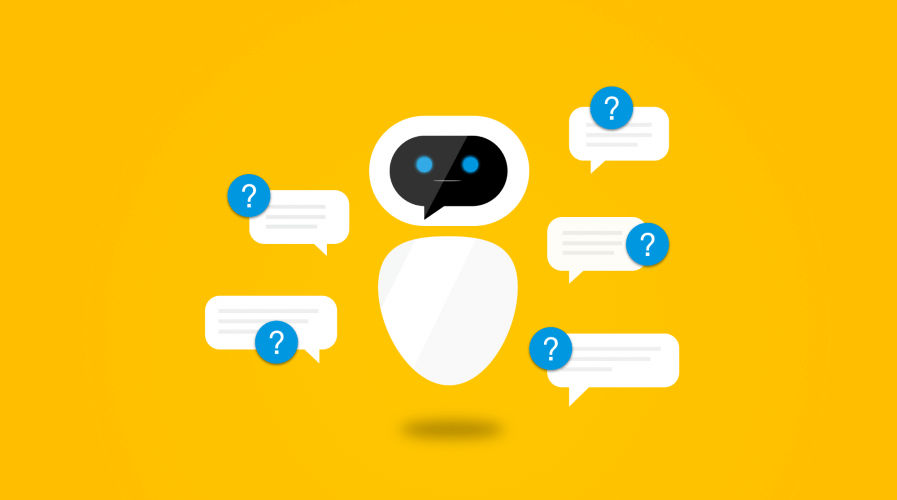
There are many kinds of chatbots available that businesses can take advantage of. Source: Chatbot Magazine
Here’s how you can use chatbots to level up customer service
IN the age of disruption, chatbots are present in more ways than we’re aware of.
When you’re on Facebook Messenger linked up directly to your original account, that’s the work of a bot. If you encounter a problem while paying a bill online and it gets resolved through a pop-up chatroom with a customer service representative – that’s also derived from a chatbot.
Artificially intelligent chatbots aren’t just for Fortune 500 companies anymore. Many small businesses are now capitalizing on the ever-growing number of automated assistant options, and according to a Business Insider report, 80 percent of businesses already use or plan to use chatbots by 2020.
Growing popularity
Chatbots have dynamically caught the attention of everyone in the tech ecosystem. To gain an edge over competitors, many developers and companies are leveraging the power of chatbots that provide anything from automated messages, weather information, or even shipping notifications.
Recent research by logistics information and event company eyefortransport (eft) revealed an important trend. As of the last quarter of 2016, 79 percent of supply chain businesses said they were not engaging with chatbots in any capacity. Fast forward a few months to the second quarter of this year and suddenly, 51 percent admitted to using the technology.

Chatbots are increasingly being adopted by businesses for customer service reasons. Source: Shutterstock
“This might not be the year of the chatbot, but we’re certainly a step closer,” eft commented in the report.
During Microsoft’s Build Conference this year, CEO Satya Nadella expressed his belief that the future of technology lies in basic human language. In this new wave of technology, conversation is the new interface, and “bots are the new apps.”
Power of the chatbot
Botkit designer and technologist Ben Brown believes workers and organizations who can master scripting and automation to develop a chatbot will gain an edge on those who can’t.
“What if there was an HR bot that could collect performance reviews and feedback? What if there was a meeting runner bot that automatically sent out an agenda to all attendees before the meeting, then collected, collated and delivered updates to team members?” he wrote.
“It could make meetings shorter and more productive by reducing the time needed to bring everyone up to speed.”
One of the useful things a bot can do is quickly look up information for a user, and send the results as a response almost immediately. Their flexibility and lack of user dependency give customers instant access to all the information they need.
The instantaneous nature of the chatbot’s problem-solving ability is an attractive feature in the era of convenience, as it not only saves time for the busy user but also removes the possibility of human error.
Friend to the human, chatbots can act as an online personal assistant and interact with us like a normal human being to tackle problems with speed and accuracy.

Customer experience could get the 24/7 treatment with the integration of chatbots. Source: Shutterstock.com
For example, Amy Ingram, also known as x.ai, is a personal assistant that helps you schedule meetings. It’s an AI bot designed to read and produce language to start email conversations. She can learn your personal scheduling preferences and request meetings on your behalf all at a time that works for you.
According to CEO and founder Dennis R. Mortensen, taking just one task, like scheduling meetings, off the plate of busy workers can make quite an impact.
“Our data shows that scheduling a single meeting takes about 17 minutes on average. Think about that for a second,” he said according to Business News Daily.
“If you’re a small business owner, and you schedule eight meetings a week, you’re wasting over two hours per week and nearly 10 hours a month scheduling your own meetings.”
Furthermore, for many businesses in the service industry, customer care has to be provided all year around, day and night. With chatbots, availability will no longer be an issue – all you’d need is for the actual messenger to stay active. Rather than spending money on a new hire to work a round-the-clock shift system, streamlining the process with these friendly bots will help businesses establish trust and transparency with their clients.

Commerce Bot, a robot which provides customer service with artificial intelligence technology and voice recognition is seen at SK telecom’s stand at the Mobile World Congress in Barcelona, Spain. Source: Reuters
Building your chatbot
The purpose of a bot is to provide a service. With that, the first step is to decide your bot’s purpose. Providing a service people actually want to use over and over again is essential.
They won’t necessarily be able to fix or solve every single thing a customer asks, but can brainstorm a typical problem that your business has come across and find a way to help fix it in a more efficient way.

Facebook’s Messenger has integrated a chatbot option for its businesses to interact with customers. Source: Facebook
Although there are many types of chatbots, when building one for the first time you’ll need to decide what type of bot you want. It could be either a purely informational one, or a utility bot with a specific purpose in mind.
Next, decide what platform your bot will live on. For example, your bot could live on Messenger or Slack. While these are two of the more popular options, there are many more available, such as Kik and Viber. So it’s best to aim for the app with the audience that you’re trying to reach. Slack, for example, tends to be more business-focused, versus Messenger which taps into your social Facebook network.
Luckily, there are numerous platforms that can help your build your bot without a lot of coding experience required. The next step would be to decide which service you’ll use to build the chatbot. Most messenger apps have tools and documents to help developer build bots. Some options include Botkit, Botsify, ChattyPeople, Chatfuel and Motion AI.
Finally, you should think about how you can build personality into your chatbot. Don’t just take them as mere tools, really find a way to think of these bots as members of your team. Their success with the public is dependent on your team’s desire to use them. They are there to provide a better, faster, more reliable way to reach your companies goals but they shouldn’t feel separate from your company.
Take advantage of the technology by making them sound like real people, with a user-friendly personality and make sure that it is representative of your company’s brand and culture.
Chatbots, powered by artificial intelligence and machine learning, can do so much more than mobile applications because it can learn our habits, understand our tastes and preferences, and can provide answers to difficult queries in a matter of seconds. They have the power to revolutionize the customer experience to the point that if brands don’t embrace the rapid growth, they will be left behind.
READ MORE
- Strategies for Democratizing GenAI
- The criticality of endpoint management in cybersecurity and operations
- Ethical AI: The renewed importance of safeguarding data and customer privacy in Generative AI applications
- How Japan balances AI-driven opportunities with cybersecurity needs
- Deploying SASE: Benchmarking your approach








